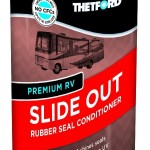When Old Man Winter threatens to make an appearance, it’s time to consider storing your RV until the buds appear on the trees in Spring. The best place to store your RV is in a warm and popular snowbirding location like Arizona, Southern Texas, or Florida – and with you in it, of course. But if that is not in the cards, choosing a storage facility close to home will be your probable choice. If you do not have adequate storage facilities at your residence, you will have to select a commercial storage facility. Indoor heated storage is worth the added cost when you consider the possible damage that can be caused to your RV by heavy snow collecting on the roof, freezing and broken pipes and water pumps, damaging water leaks from blowing rain – and the added security of not parking on the street. If you live in a more mild climate covered or even uncovered storage may be adequate providing you have properly prepared the RV for storage. When choosing a storage facility select one that has experience with storing RVs, provides serious security (fully fenced, well-lit, locking gates, and is accessible 365 days a year (who knows, you may have a warm air mass pass through in January and you can escape for a quick weekend camping trip). But wherever you store your RV for the winter, you will need to prepare it first. Here are some basic tips or winterizing:
- Empty all your tanks – drinking water, gray, and black water.
- Remove the drain plug of your water heater and drain (this is a good time to check the anode rod and replace if necessary), then replace the plug.
- Blow out all the remaining water in your system with an air compressor and an air blow out adapter (build up pressure in system to about 10 psi, then open each outlet one-by-one slightly until only air comes out – don’t forget the toilet and outside shower). Drain the little bit of water that the air pressure blew into your holding tanks into a bucket and discard.
- Pour a little RV antifreeze into every drain and into the toilet to keep the seal from drying out.
- Place moth balls or other critter deterrent at various places in the RV to discourage pests. Block all holes where critter could get in with brass or aluminum wool or spray foam insulation material into the holes.
- Wash your RV inside and out and make sure it is dry before storing. Look for and eradicate mildew or it will be out of control by Spring.
- Set out a few containers of a moisture a absorbent keep moisture at bay.
- Do a monthly inspection into every hidden place and correct any problems you spot before they get out of hand.
When Spring comes, you’ll be ready to roll.

